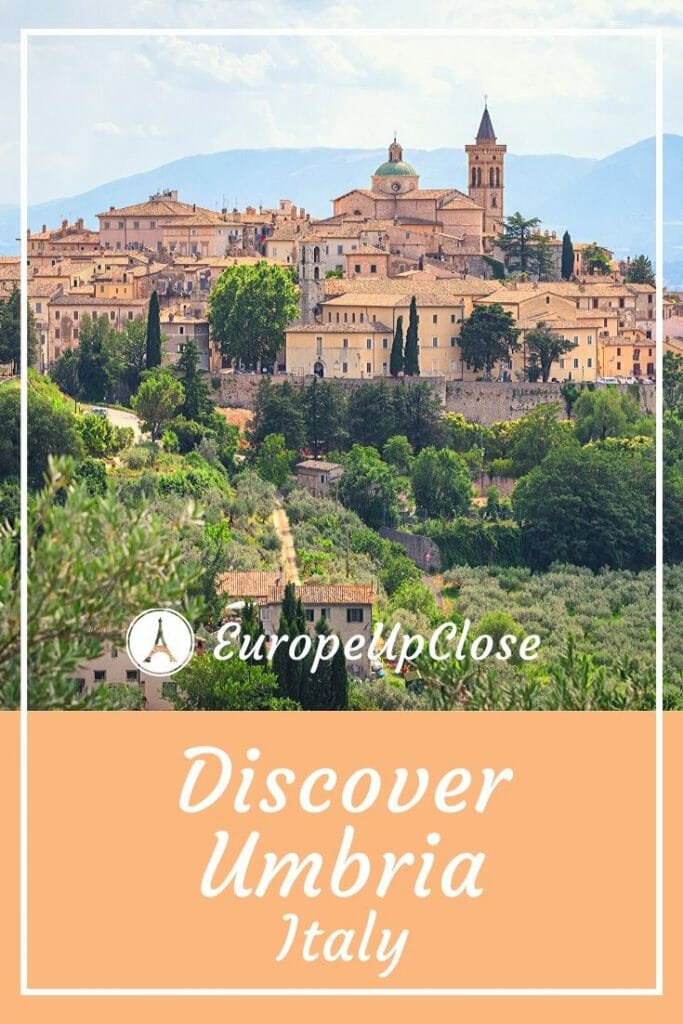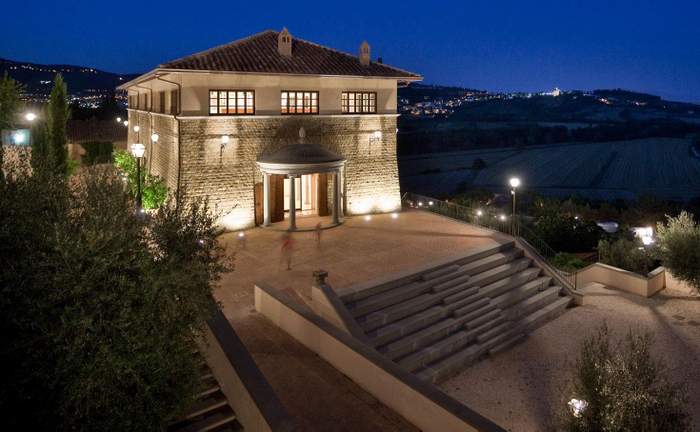Umbria’s Traditional Foods
I wanted to learn more about Umbria’s traditional foods, especially that strange Norcian mortadella with the chunk of mystery meat inside. When I found the store, Il Parma Delizie Alimentari, with a large man carving meat behind the counter, I knew I had the right place.
Pecorino Cheese
Armando is an experienced purveyor of fine foods, and when I asked him about Umbria’s most important culinary ingredients, he enthusiastically explained. He told me that Pecorino is Umbria’s most important cheese.

There are three basic ways of aging Pecorino (I’d only eaten the hard version commonly found in the United States). The freshest is actually soft. It is usually aged 3 months and has a very light texture. The next Pecorino is aged 6-9 months, and it still retains the creaminess, but its sharp flavors are more pronounced (this is my favorite).
The final type is aged at least one year, it is very hard and very sharp. The flavor of this cheese is so strong that it might knock you off your feet. Unless you’re a Formaggio veteran, you might want to incorporate this cheese in a pasta dish (speaking of which, I have found very few types of pasta or pasta dishes that are unique to Umbria).
Mortadella di Norcia
When I asked Armando about the mortadella from Norcia, he said that the piece of meat in the center was lard. Do they put it in to keep the salami moist, I asked? He responded, No, they just put it in because they want to. It serves no purpose. Well, that’s what you get when you ask too many questions.
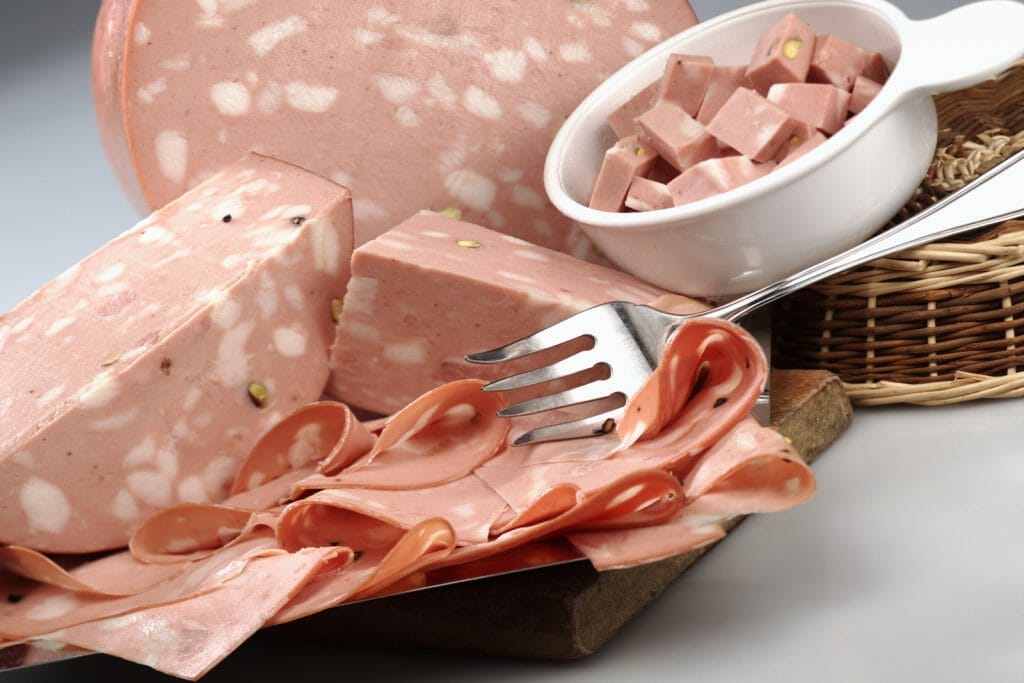
Torta di Testo
Umbria has a traditional bread called torta di testo, which is a flat, almost pita-like bread that has very little salt – very similar to Roman piadina. Kristin and I made sandwiches on it with Umbrian prosciutto, which is made extra salty to pair well with the local, salt-less bread.
The regions around Umbria, such as Tuscany, make their bread without salt. This ancient tradition originated in a protest against the pope. I’m not certain on the century, but the church once controlled the tax and sale of salt. The Italian people became fed up with the pope at the time, and they boycotted salt. The ramifications can still be tasted today.
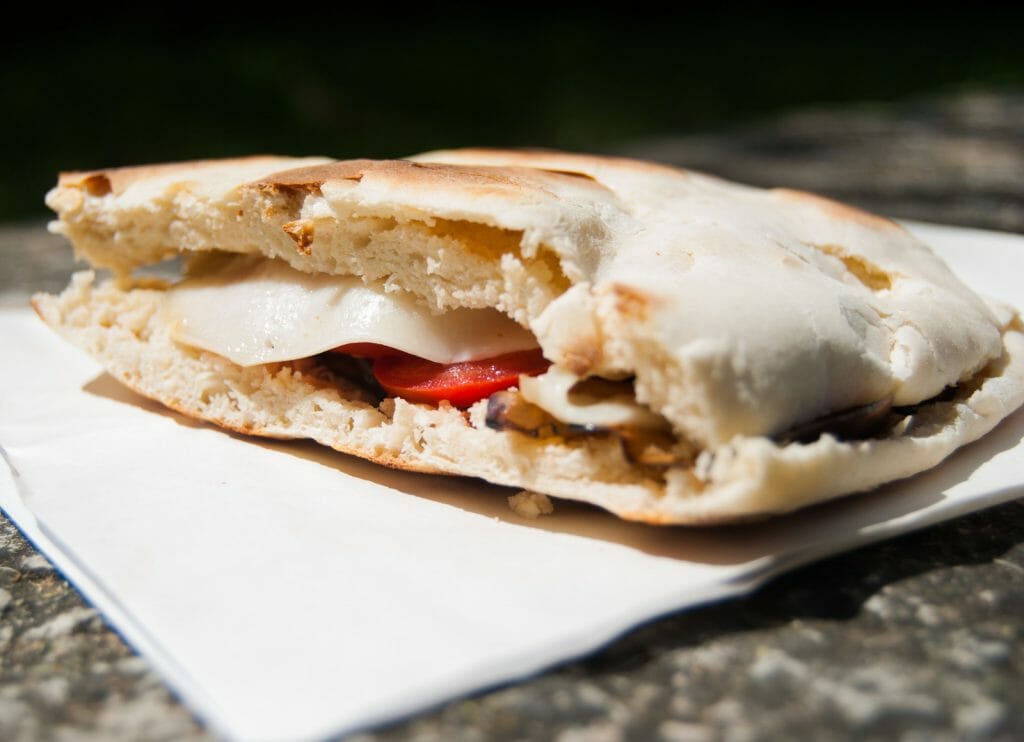
Armando finished his lesson by talking about Norcia’s famous truffles. White truffles can be found in the northern areas of Umbria, but the Norcian black truffle receives the most praise.
It is made into a spread or sauce called salsa di tartufo, and you can’t beat it when spread on a sandwich. I’ve tried using it on pasta, but I find that the flavors are masked. On a sandwich of fontina and prosciutto on torta di testo, it’s divine.
Five Fabulous Festivals in Umbria
Written by Rebecca Winke
Welcome to Umbria
Umbria– with its bucolic patchwork landscape of vineyards, olive groves, and tiny medieval stone hilltowns–is not known as a big party destination. The Umbrians are generally a staid and reserved populace, and the rolling hills and sleepy villages that characterize this region in central Italy lend themselves more to contemplatively sipping cappuccinos in tiny piazzas than bacchanal excess and dancing until dawn.
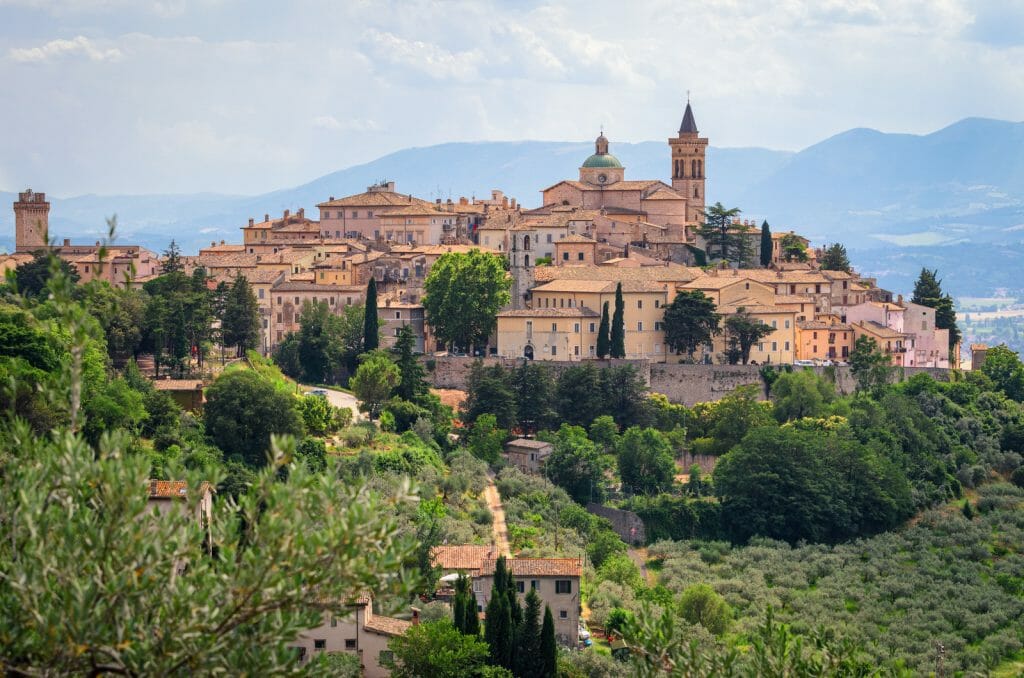
Festivals in Umbria
That said, there is nothing like an Umbrian town during that one time a year when everyone really lets their hair down. Almost every town in the region has an annual festival—often centered around the town’s patron saint feast day. Many of the citizens of each town get decked out in period garb, they get riled up, and there is an irresistible air of celebration.
For an unforgettable visit, try to time your trip to coincide with those magical days when flags and banners hang from each window, and taverne (outdoor temporary eating areas which range from refreshment stands to all-out restaurant fare) sprout overnight like mushrooms in the piazzas.
During the festival period, street musicians play around every corner, costumed processions take over the cobbled streets, medieval markets are reenacted, and crossbow tournaments draw participants from surrounding towns. To the delight of all, jousting, singing, and dancing reaches far into the night.
Top 5 Festivals in Umbria Italy
Corsa all’Anello
The Corsa all’Anello in lovely (and largely unknown) Narni opens the festival season at the end of April. Two weeks of medieval merry-making centered around the feast day of patron Saint Giovanale on May 3rd culminate in a historic competition on horseback—dating back to 1371.
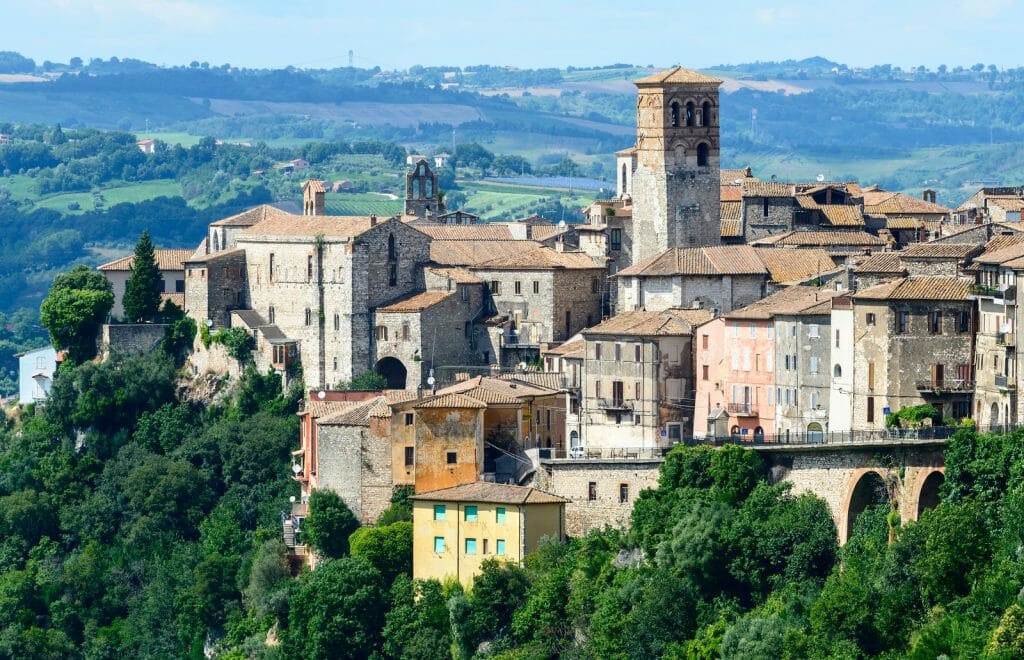
Riders attired in period costumes attempt to drive their lances through a silver ring thus winning honor and glory for their terziere, or town district. Don’t miss the moving ceremonial candle offering at Narni’s twelfth-century cathedral the night of May 2nd.
Calendimaggio
For pure pageantry, nothing tops Assisi’s Calendimaggio the first weekend in May. This hill town – home of Saint Francis – sheds its normal spirit of peace and brotherly love to spend three days (and nights) locked in intense competition as the Parte de Sopra and the Parte de Sotto stage processions, scenes of medieval life, and concerts with period music as they vie for the honor of the Palio.
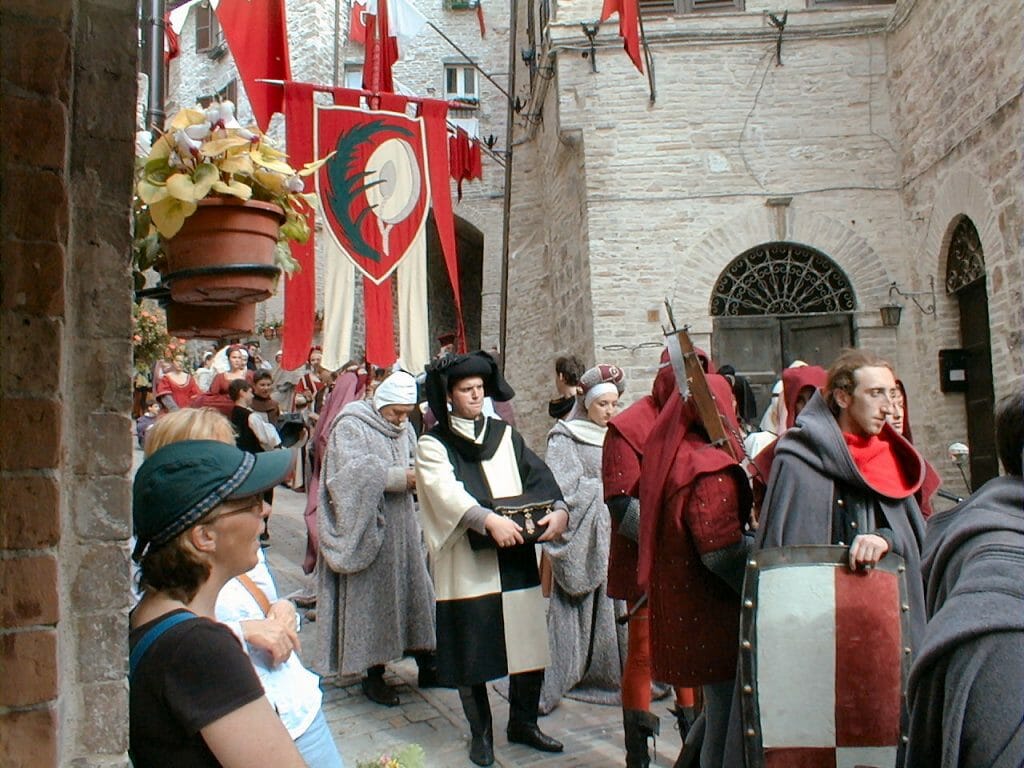
The festival—currently shortlisted for UNESCO World Heritage recognition—is seen best from the bleacher seats in the main piazza (tickets are available in the tourist information office).
Corsa dei Ceri
Pamplona has the Running of the Bulls, Glouchester has the Rolling of the Cheese, and–in the same category of mayhem–Gubbio has the Race of the Candles (Corsa dei Ceri).
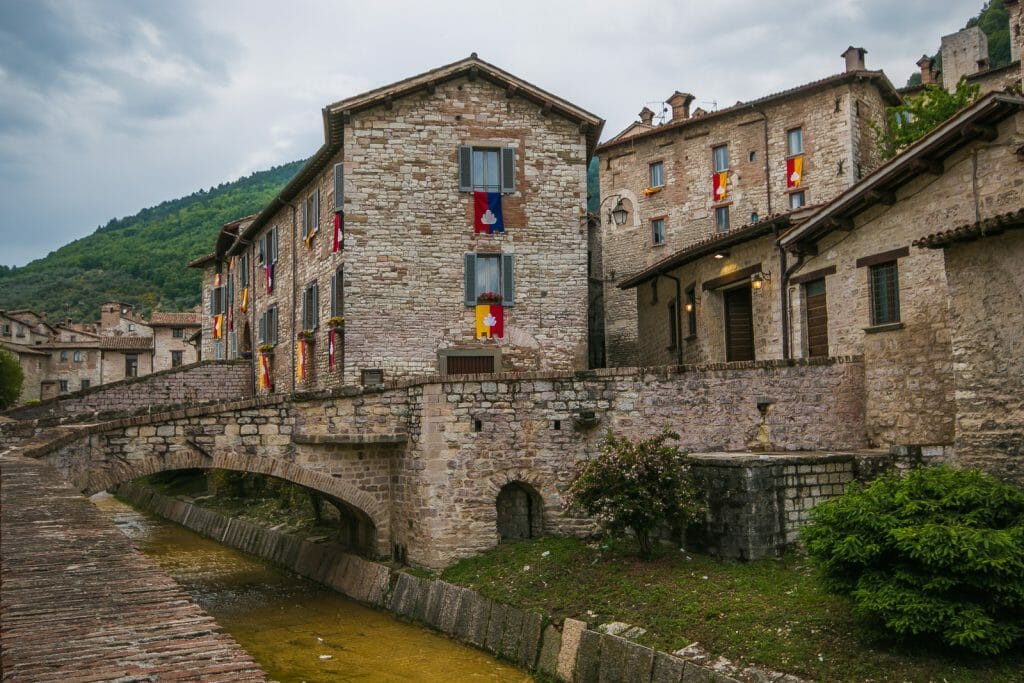
On May 15th, in honor of patron Saint Ubaldo, teams of men hoist three towering wooden ceremonial candles on litters and race uphill through the packed streets to the basilica on the slopes of Mount Ingino.
Spoiler alert: the candle topped by the statue of Ubaldo always wins. To penetrate past the general pandemonium and better follow what’s going on, this is a festival best enjoyed with a local guide.
Mercato della Gaite
A perennial favorite with kids (and their parents) is the quieter Mercato delle Gaite held in late June in tiny Bevagna.
Each town district–or gaite—accurately reconstructs functioning artisan workshops using both the techniques and technology of the 1300s to produce items that include silk (from silkworm to cloth), paper, bronze bells, beeswax candles, and religious icons.
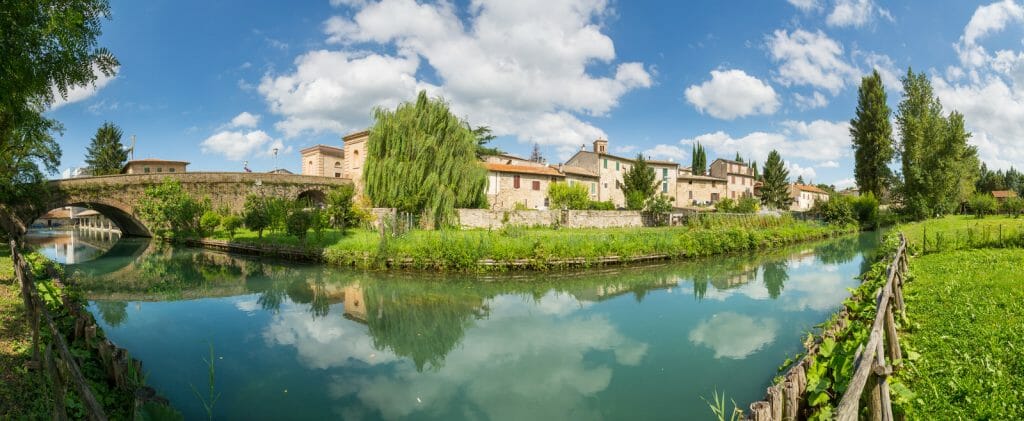
To beat the crowds, choose a weekday in the early evening to visit the workshops, and be sure to have dinner in one of the outdoor taverns serving period dishes.
Giostra della Quintana
Where most historic festivals in Umbria are set in the middle ages, Foligno’s Giostra della Quintana in September evokes the sumptuous 1600’s, with elaborate Baroque costumes, elegant banquet dinners, and a noble equestrian tournament.
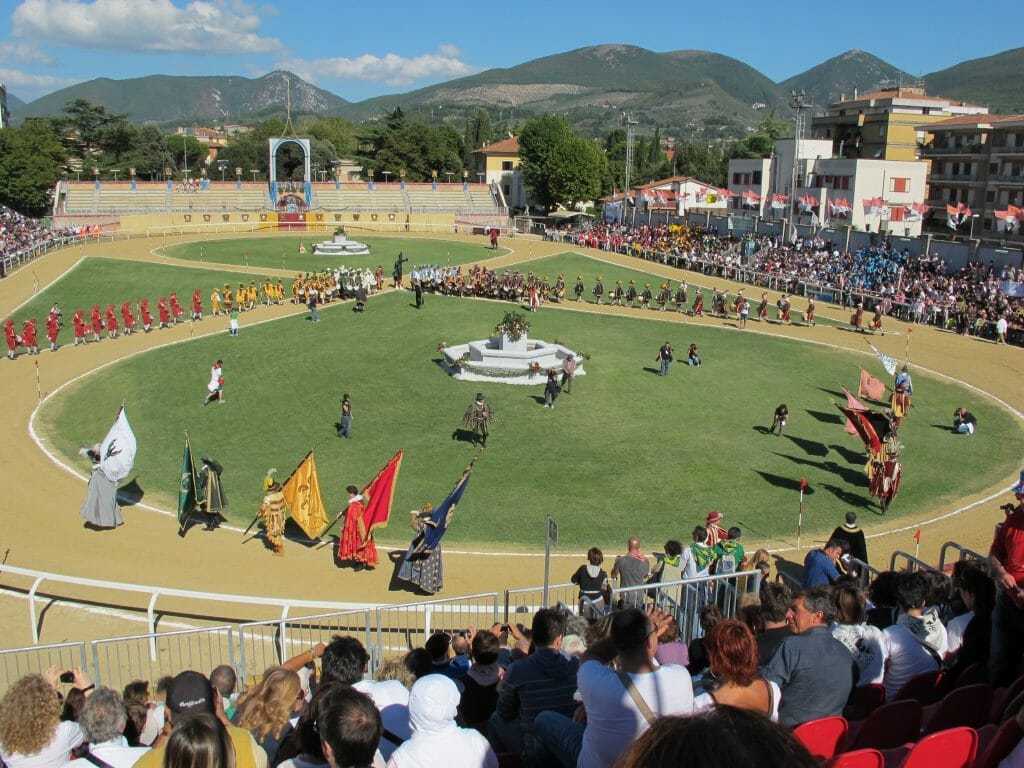
The high point of this elegant festival’s pomp and circumstance is the solemn procession and blessing of the horses the evening before the tournament. Still relatively undiscovered by tourists (who make up a large portion of the crowd at other festivals in Umbria), the Quintana is a perfect way to lose yourself completely in Umbria–past and present.
Rebecca moved to Italy from Chicago in 1993 and shortly thereafter opened an agriturismo in her husband’s renovated family farmhouse at the foot of Mount Subasio near Assisi, Umbria. She spends her time taking care of guests at Brigolante, blogging about the lovely region she now calls home at Rebecca’s Ruminations , and wondering about what strange winds blew an urban vegetarian to a farm in Umbria.
Solomeo Brings a Renaissance Fair and Luxury to Umbria
written by Claudia Flisi
Renaissance Fair in Solomeo
Solomeo, a tiny town 14 km. (about 10.5 miles) southwest of Perugia, in Italy’s Umbria region, brings history to life every summer with its Renaissance Fair. For ten days between late July and the first few days of August the handful of streets in this dollhouse village (population: 500) are crowded with more than 15,000 visitors from elsewhere in Italy and from abroad.

Street performers in costume animate every angle, craftspeople ply local wares ranging from edibles to wearables, and every evening a banquet is served outdoors on rough-hewn wooden tables by locals in Renaissance attire.
Almost every visitor to the fair winds up enjoying at least one evening meal. The food and wine are rigorously Umbrian, with the emphasis on pasta, meat, and regional produce such as figs, fava beans, greens, and truffles, all washed down with excellent local wines and the ubiquitous unsalted bread.
Exploring Solomeo
But the town’s roots predate the Renaissance by more than a millennium. Solomeo’s history can be traced back to Etruscan times (from about 700 BC), Relics from that civilization have been found in the area, and the Etruscan deity “Lumm” was apparently honoured by the inhabitants, so the name is believed to be a derivation of “San Lume”.
If you want to know what it is like to walk the streets of a medieval hamlet with Etruscan origins, albeit a spotlessly clean version free of disease and animal excrement, plan to come before or after the Renaissance Fair. The town may feel a little like Disneyland but there is no admission fee, and you can arrange for a guide to describe Solomeo’s history and architectural features in several languages, including English.
Castello di Solomeo
These features include the Renaissance-dated Castello di Solomeo, the 16th century Villa Antonori, and the church of San Bartolomeo dating back to the 12th century.
Seven schools for crafts — including textile tailoring, cutting, and mending, masonry, and gardening – are tucked away in parts of the castle; students come to learn these artisanal skills much as Renaissance apprentices learned by observing and assisting master craftsmen.
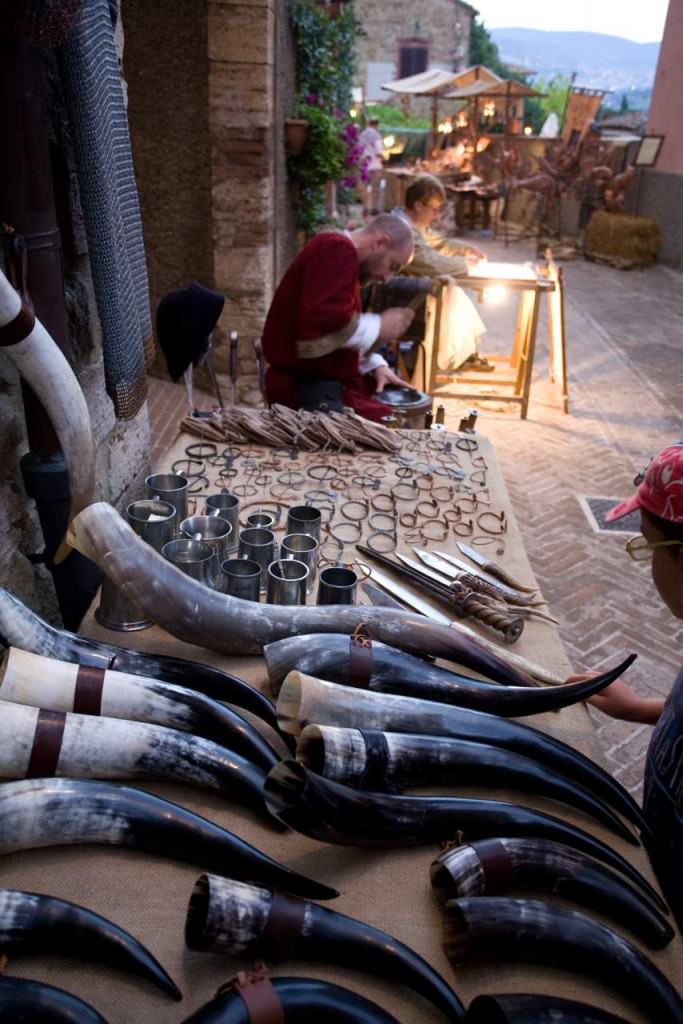
Solomeo Theater
Solomeo also has its own theatre. The latter was completed in 2008 but was constructed with respect for its historical context, so it fits in with the historic buildings.
The piazza outside the theatre includes a Roman-style outdoor “amphitheater” that hosts performances in the summer when the theatre itself is closed.

Brunello Cucinelli – The King of Cashmere
The name of the theatre, Teatro Cucinelli, is a link to the town’s restoration and its relationship to cashmere: the former was financed by one man, Brunello Cucinelli, and his eponymous company and foundation.
Brunello Cucinelli is sometimes called the “king of cashmere” because the company he founded in 1978 focuses on the design, production, and sales of upscale cashmere garments.
In 1985 Cucinelli bought most of Solomeo, including the castle, the villa, and the church. By then his company was doing well and he wanted to establish headquarters in the then-almost-abandoned hamlet, partly for sentimental reasons (his wife is from Solomeo and he courted her there), partly for economic reasons (a dying town doesn’t cost a lot), and partly for image (a prestige brand needs a prestige headquarters).
The importance Brunello Cucinelli attaches to the town can be seen in the logo of his company, which incorporates the coat of arms of the Castello di Solomeo.

Today the family lives in Villa Antonori; when not traveling, Brunello can walk to his office, as do some of the company’s 700+ employees who work at headquarters.
Cashmere Factory
Visitors are invited to tour various company facilities, such as its gorgeous library, and eyeball others from afar, such as the luminous timber-roofed new company restaurant whose main flaw is that it is not open to the public.
One can actively participate in the town’s veneration of cashmere at the Cucinelli factory store, part of the headquarters complex. Prices are 30 per cent less than in High Street shops, and the shop is sometimes used as a testing ground for new products and marketing ideas.
So you may pick up an item before it makes its way into next season’s collection. All are welcome at the store without prior appointment. But, for the rest – tours of the town, visits to the craft schools, the history of Solomeo – it is advisable to write in advance to comunicazione@brunellocucinelli.it.
Written by and photos (unless otherwise noted) by Claudia Flisi for EuropeUpClose.com
Umbria Italy Travel Tips and Stories – Pin for Later:
